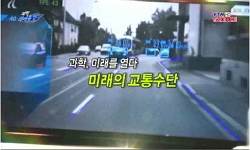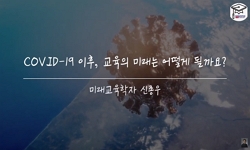본 연구의 목적은 COVID-19 대유행이 교통수단 이용에 미친 영향을 분석하는 것이다. 다 양한 수단의 통행수요를 분석하여 COVID-19 유행 기간 동안 교통수요가 어떻게 변화했는지, 각 교통수단...
http://chineseinput.net/에서 pinyin(병음)방식으로 중국어를 변환할 수 있습니다.
변환된 중국어를 복사하여 사용하시면 됩니다.
- 中文 을 입력하시려면 zhongwen을 입력하시고 space를누르시면됩니다.
- 北京 을 입력하시려면 beijing을 입력하시고 space를 누르시면 됩니다.
https://www.riss.kr/link?id=A109646125
- 저자
- 발행기관
- 학술지명
- 권호사항
-
발행연도
2023
-
작성언어
Korean
-
주제어
COVID-19 ; 교통수단 ; 통행수요 ; 대중교통 ; COVID-19 ; Transportation ; Travel demand ; Public transportation
-
KDC
330
-
자료형태
학술저널
-
수록면
91-120(30쪽)
- 제공처
-
0
상세조회 -
0
다운로드
부가정보
국문 초록 (Abstract)
본 연구의 목적은 COVID-19 대유행이 교통수단 이용에 미친 영향을 분석하는 것이다. 다 양한 수단의 통행수요를 분석하여 COVID-19 유행 기간 동안 교통수요가 어떻게 변화했는지, 각 교통수단에서 어떤 변화가 가장 민감하게 일어났는지를 비교하였다. 또한, 엔데믹 시대 이 후의 수요 변화를 비교하여 어떤 교통수단이 회복력이 높은지 검토하였다. 분석 결과, COVID- 19는 대중교통 부문에 전반적으로 큰 영향을 미친것으로 나타났다. 특히, 시내 교통과 광역 철 도는 약 30%와 40%의 감소를 보였다. 그러나, COVID-19 종식 후에는 빠른 회복세를 나타내 는 것으로 나타났다. 시내 대중교통은 약 5, 6년, 광역 철도는 약 1, 2년 이후에 COVID-19 이전의 이용량으로 돌아갈 것으로 예상되나, 개별 수단에 따라 다른 양상을 보이는 사례도 존재 하였다. 도로교통 분야에서는 COVID-19 이후의 통행수요가 대부분의 구간에서 증가하는 양상 을 보였다. 연구 결과를 바탕으로 도출한 시사점음 다음과 같다. 먼저, 장거리 및 도시 간 이 용객 수요에 대한 지원 정책이 필요하다. 또한 느린 회복이 예상되는 시내 단거리 교통에 대 한 보완 정책이 필요하다. 본 연구는 향후 COVID-19와 유사한 상황이 발생할 경우, 실효성 있는 교통 정책을 수립하는 데 도움이 될 수 있는 기초자료가 될 것으로 기대된다.
다국어 초록 (Multilingual Abstract)
The purpose of this study is to analyze the impact of the COVID-19 pandemic on transportation usage. By analyzing the demand for various modes of transportation, the study examines how transportation demand changed during the COVID-19 pandemic and whi...
The purpose of this study is to analyze the impact of the COVID-19 pandemic on transportation usage. By analyzing the demand for various modes of transportation, the study examines how transportation demand changed during the COVID-19 pandemic and which modes of transportation were most sensitive to these changes. Additionally, it compares the changes in demand after the end of the pandemic to identify which modes of transportation exhibit higher resilience. The analysis revealed that COVID-19 had a significant overall impact on the public transportation sector, particularly with approximately 30% and 40% decreases observed in urban transit and metropolitan rail, respectively. However, after the end of COVID-19, a rapid recovery was observed. It is expected that urban public transportation will return to pre-COVID-19 levels in 5-6 years, while metropolitan rail will take 1-2 years. Nonetheless, there were variations in recovery patterns among individual modes of transportation. In the road transportation sector, most segments experienced an increase in demand after COVID-19. Based on the research findings, several implications were derived. Firstly, support policies targeting long-distance and intercity passenger demand are needed. Additionally, supplementary policies are required for urban short-distance transportation, which is expected to recover slowly. This study is expected to serve as foundational data for formulating effective transportation policies in the event of future situations similar to COVID-19.
목차 (Table of Contents)
- ABSTRACT
- <초록>
- Ⅰ. 서론
- Ⅱ. 선행연구 분석
- 1. 팬데믹 상황에서의 교통수요 변화
- ABSTRACT
- <초록>
- Ⅰ. 서론
- Ⅱ. 선행연구 분석
- 1. 팬데믹 상황에서의 교통수요 변화
- 2. 팬데믹 상황에서의 대중교통 이용 변화
- 3. 팬데믹 이후 교통수요 변화
- 4. 시사점 도출
- Ⅲ. 연구 방법
- 1. 데이터 수집
- 2. 데이터 전처리
- 3. 데이터 일반화
- 4. 시계열 분석
- Ⅳ. 교통수요 변화 분석
- 1. 시내 대중교통 수요의 변화
- 2. 시내 도로교통 수요의 변화
- 3. 광역 철도교통 수요의 변화
- 4. 광역 도로교통 수요의 변화
- 5. COVID-19 영향 비교분석
- Ⅴ. 정책적 제언
- Ⅵ. 결론
- 참고문헌
동일학술지(권/호) 다른 논문
-
예비타당성조사의 상대적 B/C 개념과 교통 영역별 예산 배정
- 한국민간투자학회
- 김익기
- 2023
-
공공성 관점의 도로분야 정부고시 민간투자사업에 대한 비판적 고찰
- 한국민간투자학회
- 조진우
- 2023
-
- 한국민간투자학회
- 주재홍
- 2023
-
- 한국민간투자학회
- 한명주
- 2023




 eArticle
eArticle






